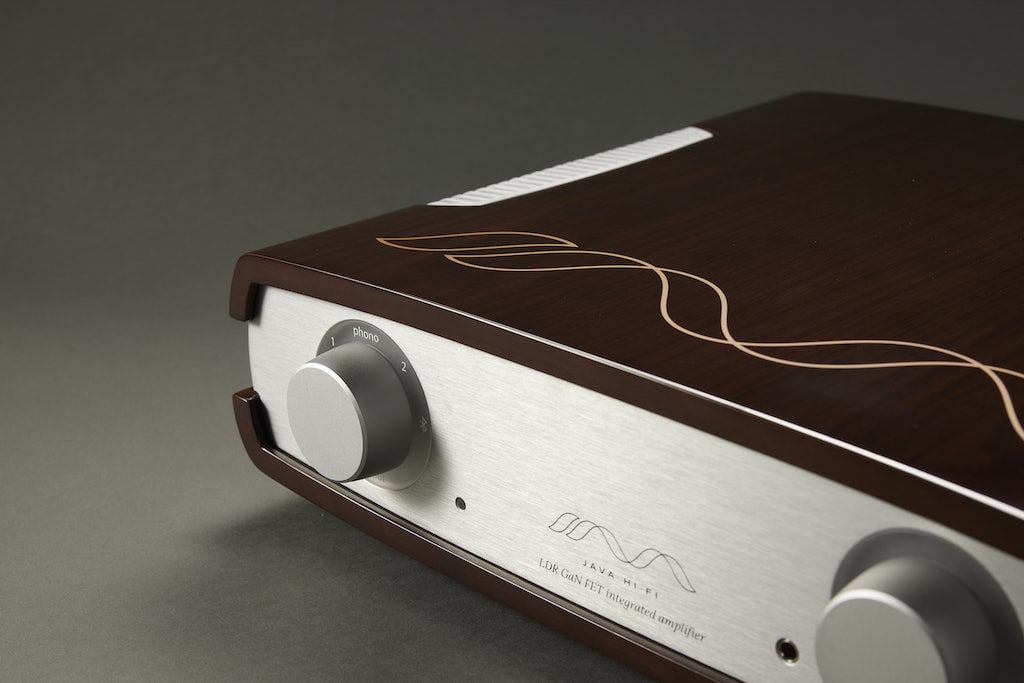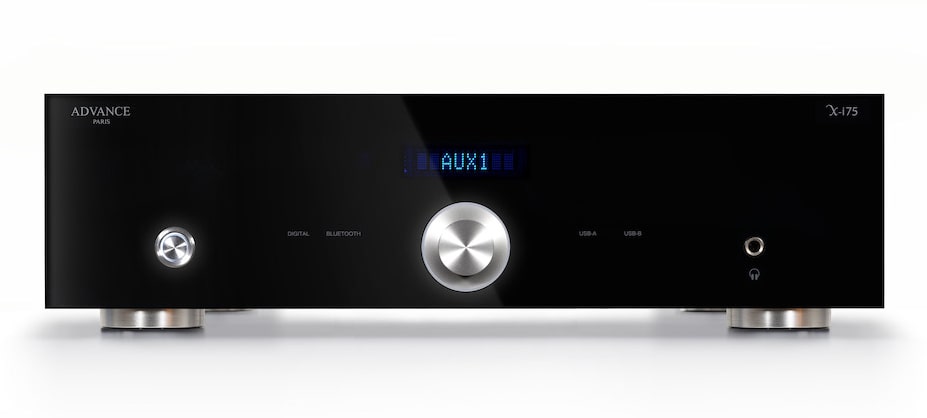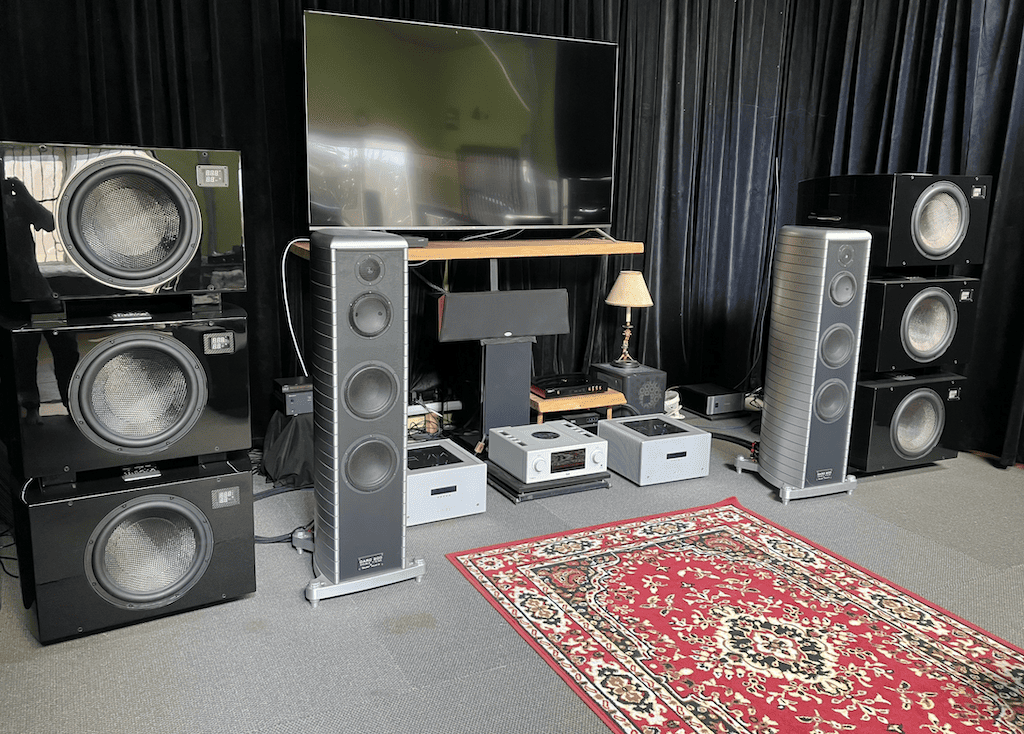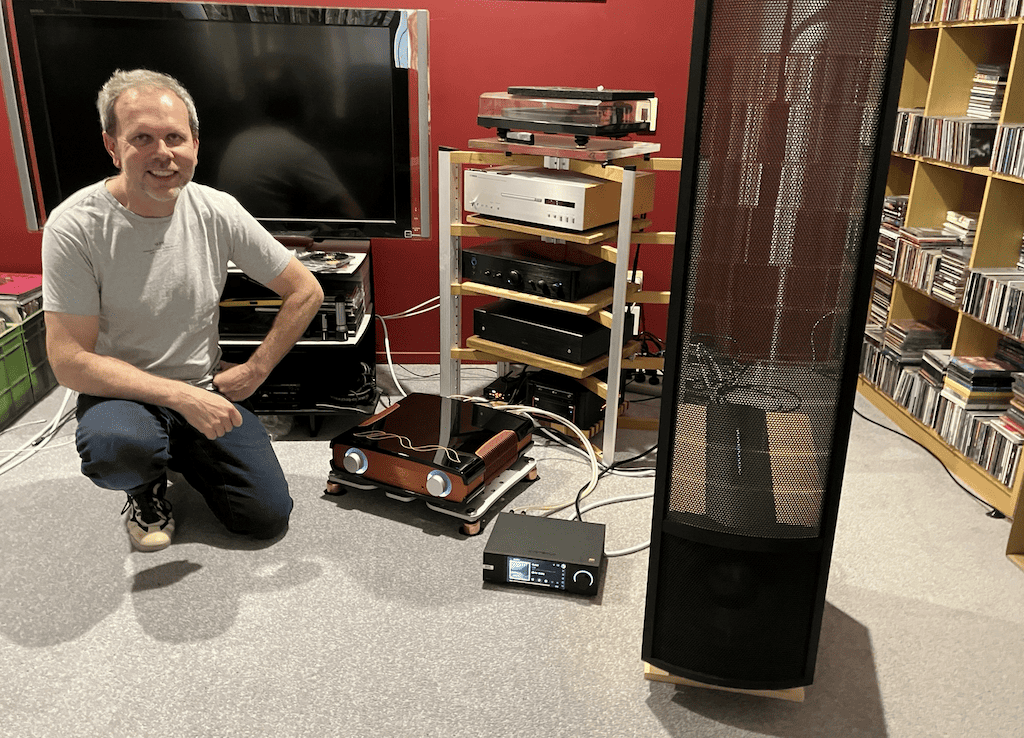Summary
Technics SU-G700M2 Integrated Amplifier
The mid-price SU-G700M2 integrated amp is packed with leading-edge technology making it a startling mid-price product, writes GARY STEEL.
$4999
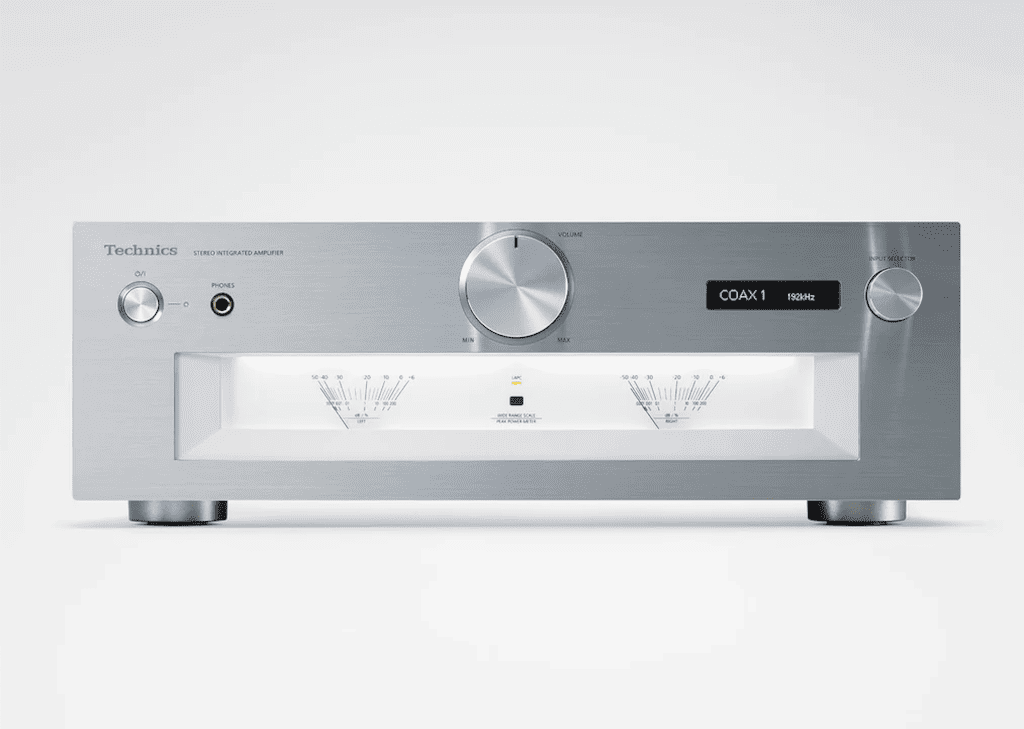 Wow, this takes me back in time. The look of this Technics integrated amp reminds me of the very first amps I bought, lived with (and sometimes blew up) with its lovely fluttering meters. It’s such a striking retro look that you could accuse Technics of being intentionally deceiving because in reality, the SU-G700M2 is about as leading edge technologically as you can get for the price.
Wow, this takes me back in time. The look of this Technics integrated amp reminds me of the very first amps I bought, lived with (and sometimes blew up) with its lovely fluttering meters. It’s such a striking retro look that you could accuse Technics of being intentionally deceiving because in reality, the SU-G700M2 is about as leading edge technologically as you can get for the price.
But it would be uncharitable of me to accuse Technics of deception because anyone who forks out for this visually striking piece of gear will know exactly what they’re getting: a defiantly 21st-century digital amp with really clever circuitry that may convince even the most dedicated analogue fiend of its impressive fidelity.
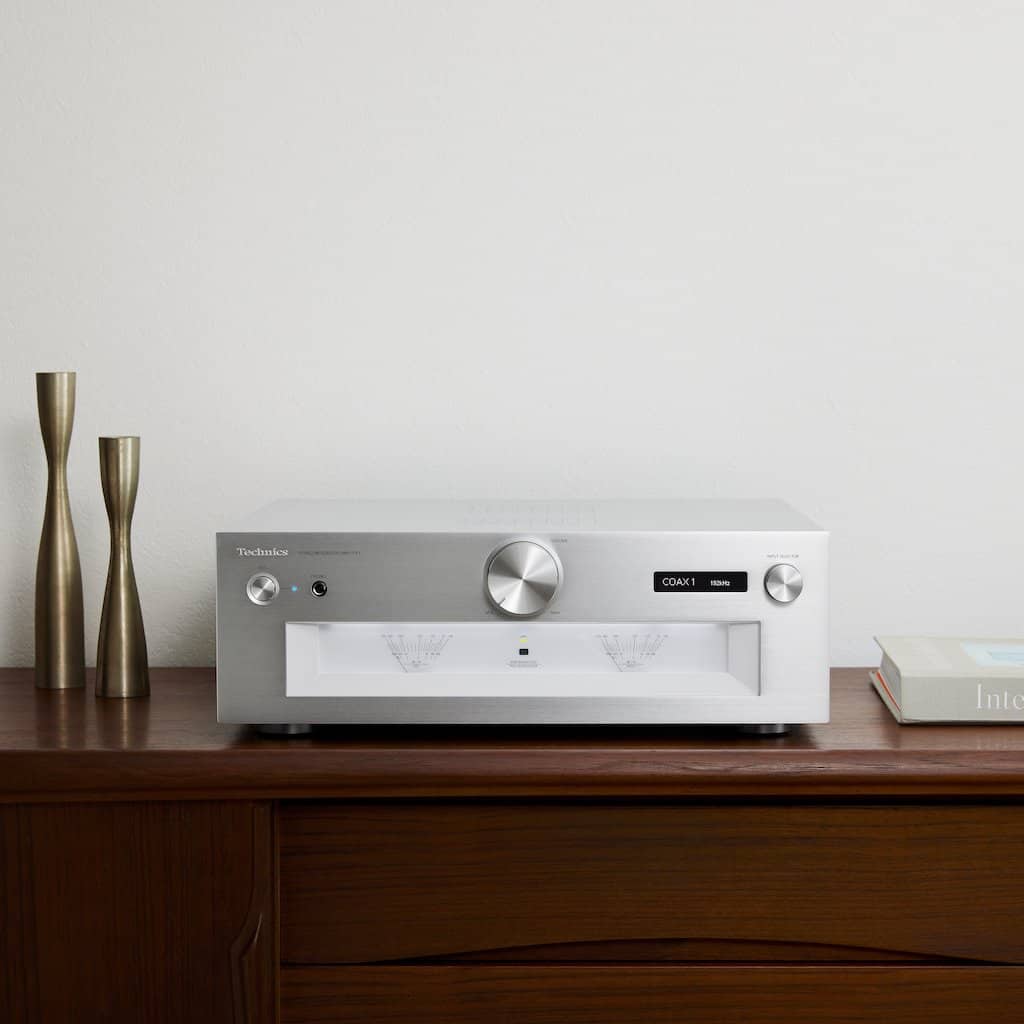 I’m not privy to the thoughts of the Technics designer who came up with the idea of the retro-looking fascia, but it’s a lovely thing to have in one’s lounge. The meters are somehow reassuring, as are the shiny, old-fashioned buttons: the on/off button, the circular input selector and the ginormous volume knob. Adding to its visual allure is the meter box, which is bathed in a rectangle of bright white light. And because Technics think of everything, if that light is just a bit too much for your tastes, it can be toned down or turned off.
I’m not privy to the thoughts of the Technics designer who came up with the idea of the retro-looking fascia, but it’s a lovely thing to have in one’s lounge. The meters are somehow reassuring, as are the shiny, old-fashioned buttons: the on/off button, the circular input selector and the ginormous volume knob. Adding to its visual allure is the meter box, which is bathed in a rectangle of bright white light. And because Technics think of everything, if that light is just a bit too much for your tastes, it can be toned down or turned off.
Would you like to support our mission to bring intelligence, insight and great writing to entertainment journalism? Help to pay for the coffee that keeps our brains working and fingers typing just for you. Witchdoctor, entertainment for grownups. Riveting writing on music, tech, hi-fi, music, film, TV and other cool stuff. Your one-off (or monthly) $5 or $10 donation will support Witchdoctor.co.nz. and help us keep producing quality content. It’s really easy to donate, just click the ‘Become a supporter’ button below.
The SU-G700M2 weighs a fairly modest 12.6kg and puts out 70 watts of power, which will adeptly drive most modern, efficient loudspeakers. Personally, I’ve always subscribed to “the more power the better” philosophy, but in practice, the amp drove both the Technics SB-G90M2 floorstanders and my large Martin Logan Summits with ease. And – presumably because of its pure digital status – there was never even a hint of heat build-up. In other words, if you want your amp to double as a heater next winter, don’t buy this amp!
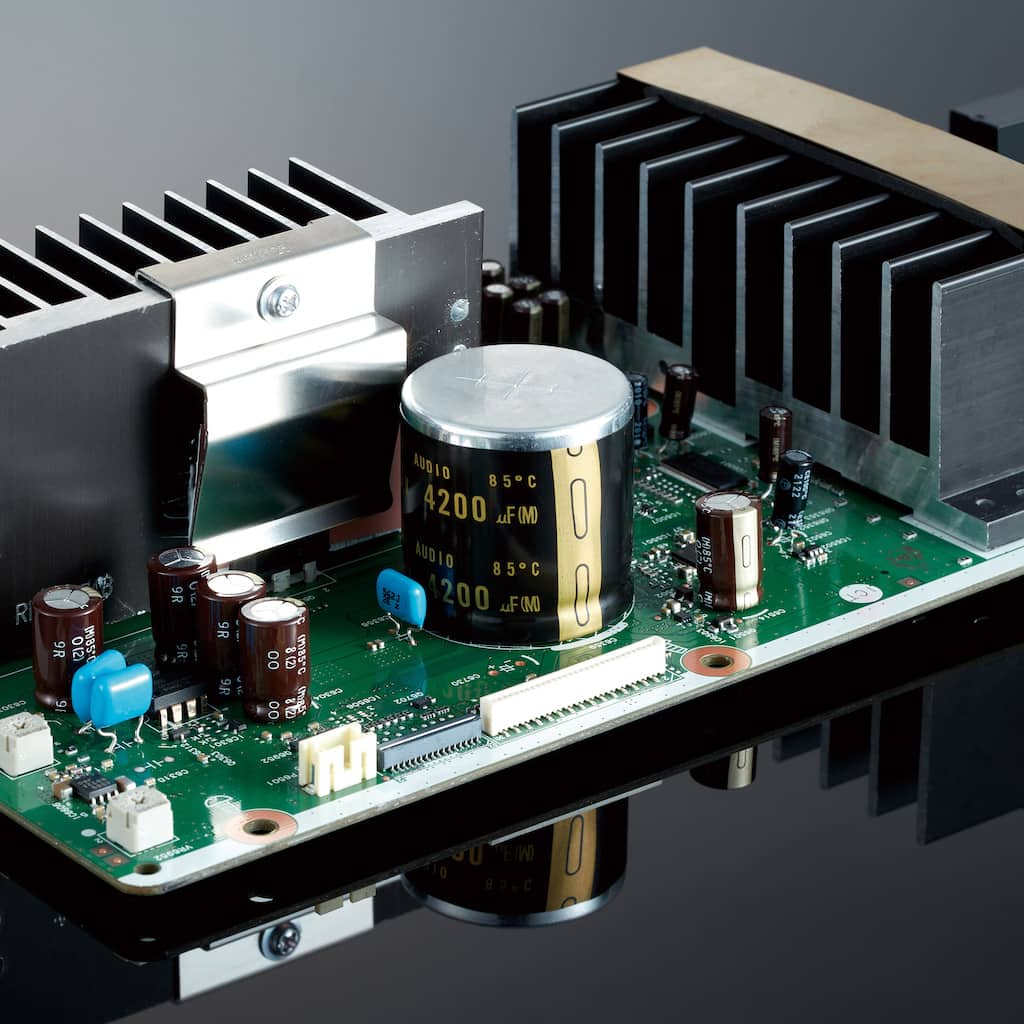 What’s So Special About This Amp, Then?
What’s So Special About This Amp, Then?
There’s almost too much to talk about in one review, so we’ll cut to the chase and discuss the most innovative and/or notable aspects of the SU-G700M2 amp, hopefully without too much geek speak.
The word ‘digital’ has long been anathema to hi-fi fans hooked on analogue reproduction, and all-digital amps have in the past had a poor reputation. The SU-G700M2 is a beautiful hybrid of analogue and digital in that its power amp section is digital, but employs something called a JENO (Jitter Elimination and Noise Optimization) engine to completely eliminate the sound quality degradation that jitter causes. Technics also boasts of its PWM (Pulse Width Modulation) conversion circuit, which apparently “optimizes noise-shaping speed, degree and quantization number… These technologies provide reproduction of natural and finely-detailed sound, enabling perception even of delicate music nuances.”
Now, this technical stuff is way above my head, but if it makes music sound great, then it’s done its clever job.
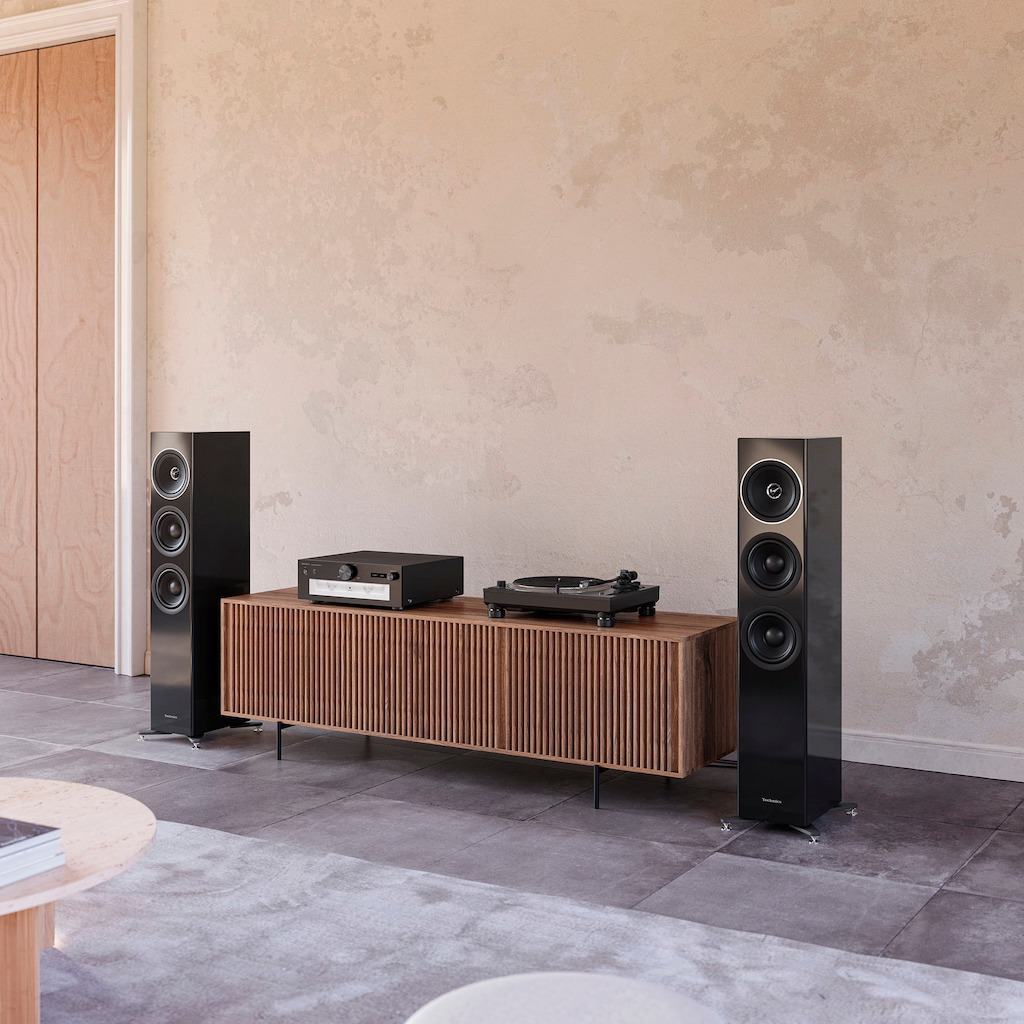 Looking at the back of the SU-G700M2 confirms both its analogue and digital credentials and provides a surplus of connection options, from its USB-B terminal suitable for PCs to optical and coaxial inputs. Naturally, there are analogue inputs for old farts like me, as well as a phono input. While many amps in the CD era eschewed phono stages altogether, the Technics includes a very good one. “The phono input achieves low noise by using a differential parallel connection configuration of a first-stage, low noise FET,” goes the Technics blurb. “In addition, four-level gain adjustment enables selection of the best gain according to the cartridge output.” Where the phono input on my trusty old Rotel preamp was clearly an afterthought and sounds like it, the phono section on the SU-G700M2 is pure class, acknowledging the phenomenal return to vinyl records and turntables in recent years.
Looking at the back of the SU-G700M2 confirms both its analogue and digital credentials and provides a surplus of connection options, from its USB-B terminal suitable for PCs to optical and coaxial inputs. Naturally, there are analogue inputs for old farts like me, as well as a phono input. While many amps in the CD era eschewed phono stages altogether, the Technics includes a very good one. “The phono input achieves low noise by using a differential parallel connection configuration of a first-stage, low noise FET,” goes the Technics blurb. “In addition, four-level gain adjustment enables selection of the best gain according to the cartridge output.” Where the phono input on my trusty old Rotel preamp was clearly an afterthought and sounds like it, the phono section on the SU-G700M2 is pure class, acknowledging the phenomenal return to vinyl records and turntables in recent years.
Ditto the headphone jack. Technics have clearly put a lot of thought and expertise into this often overlooked but important feature. Clearly, although the amp is designed primarily for reproduction through loudspeakers, modern living dictates that at times, headphone listening will be required, and it should be sans compromise. To this end, it includes “a Class AA headphone amp with separate circuits for voltage amplification and current amplification of the audio signal… The voltage is amplified by a high-grade operational amplifier with high current-supply capability, and the high-grade PWM signal output from the JENO engine is converted to analogue with high precision, thus enabling headphones to be ideally driven.” And so say all of us!
Indeed, the headphone stage does sound great, even if my middling Audio Technica ‘phones probably can’t convey all the sonic goodness.
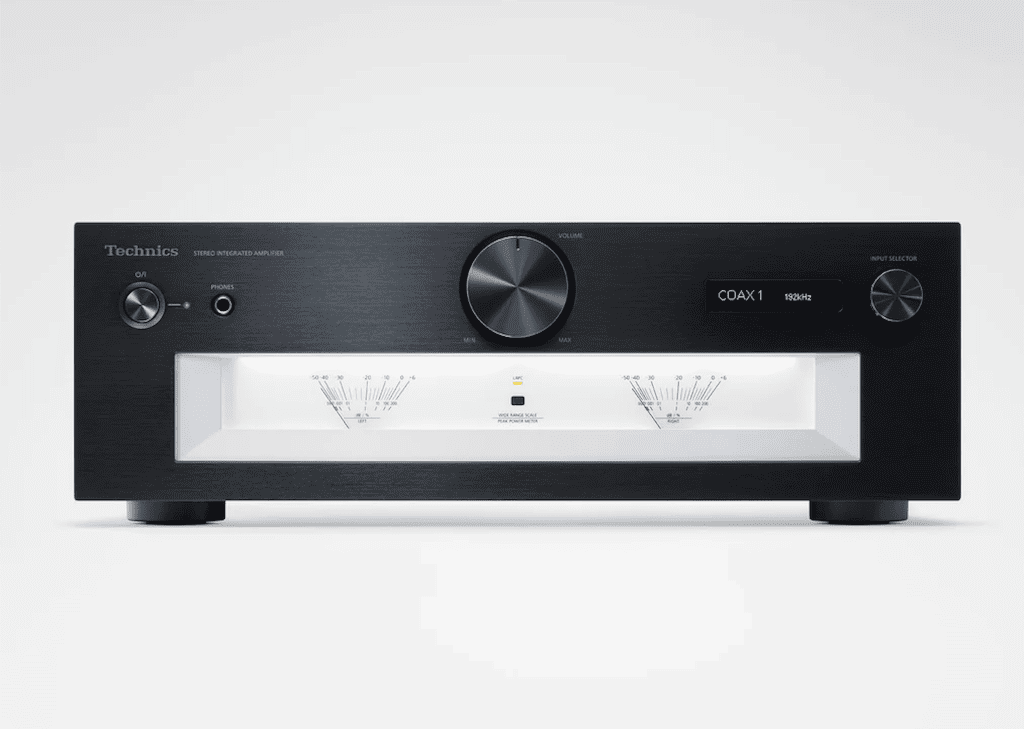 In the Technics blurb about the SU-G700M2 amp, they rave on about the three-section configuration and the advanced speed silent power supply, both of which I’m sure they’re very proud of and might make a real difference to the sound quality, but they’re not the kind of innovations that the consumer is likely to think about in a real-world day-to-day exploration of the amp.
In the Technics blurb about the SU-G700M2 amp, they rave on about the three-section configuration and the advanced speed silent power supply, both of which I’m sure they’re very proud of and might make a real difference to the sound quality, but they’re not the kind of innovations that the consumer is likely to think about in a real-world day-to-day exploration of the amp.
I’ll briefly regurgitate a bit of the blurb about those two aspects, however, just so the reader gets the gist. Firstly, the advanced speed silent power supply “has been employed for improved speaker drive power and greater feel of energy. The switching frequency has been increased from the conventional 100kHz band to the 400kHz band to ensure stable supply of voltage and current and to reduce adverse effects of modulation noise on the audio quality. The device is equipped with the same GaN FET and SiC SBD as those mounted in the SU-R1000 to deliver maximum performance from the high-speed switching power supply system.” For those who don’t know already, the SU-R1000 is the much-praised (and much, much more expensive) reference-class Technics amp, whose cutting-edge technology has trickled down to the more affordable SU-G700M2. “What’s more,” continues the blurb, “a Super Low Noise Regulator is provided in the later stage. It prevents the decrease of regulation due to fixed switching frequency and impedes the mixing of noise component into high frequencies. The result is a low-noise and high-response power supply that maximises the performance of the digital amplifier.”
The advertised three-section configuration refers to “partitions installed between the circuit blocks according to the signal level handled. This eliminates interference between circuit blocks, thus achieving clear sound quality. In addition to the three-section construction, the SU-G700M2 comes with a bottom chassis featuring a two-layer construction with 1.2-mm-thick and 2-mm-thick steel plates, a top panel made of a 1.6-mm-thick steel plate and a 7-mm-thick aluminium front panel for improved vibration damping.”
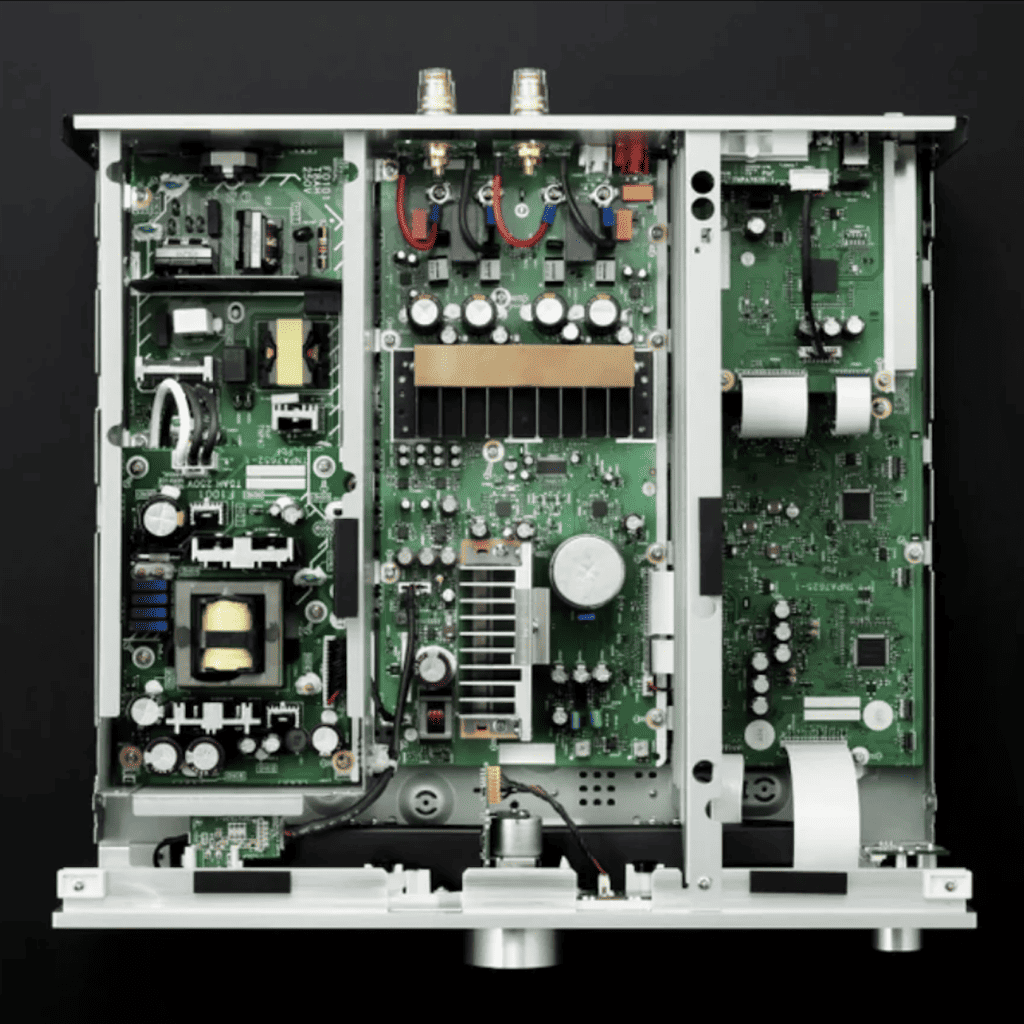 In theory, this is all very impressive but what’s out of sight is pretty much out of mind. Helpfully, there are some ultra-cool things about the SU-G700M2 that the user can play with as well. LAPC (Load Adaptive Phase Calibration) is a very clever piece of complicated technology that analyses and makes your speakers sound their best. Thankfully, for the user, it’s a simple button on the remote that you push, which results in the amp putting some test tones through the speakers. In less than a minute the speakers will perform better with the amp than they did before. The difference on most speakers will be subtle, but it’s a nice idea.
In theory, this is all very impressive but what’s out of sight is pretty much out of mind. Helpfully, there are some ultra-cool things about the SU-G700M2 that the user can play with as well. LAPC (Load Adaptive Phase Calibration) is a very clever piece of complicated technology that analyses and makes your speakers sound their best. Thankfully, for the user, it’s a simple button on the remote that you push, which results in the amp putting some test tones through the speakers. In less than a minute the speakers will perform better with the amp than they did before. The difference on most speakers will be subtle, but it’s a nice idea.
Once again, I call on Technics’ assistance in explaining exactly how LAPC works: “Speaker impedance changes with each frequency and a power amplifier is required to drive speakers without being affected by the speaker’s characteristics. However, conventional digital amplifiers are connected to speakers through a low-pass filter at the output stage, so they are even more strongly affected by the speaker impedance characteristics. Also, although the amplitude characteristics of conventional amplifiers due to negative feedback were improved, the phase characteristics could not be enhanced. We thus developed a speaker impedance adaptive optimisation algorithm that performs correction to the ideal impulse response through digital signal processing by measuring the frequency amplitude-phase characteristics of the amplifier with the speakers connected. This new technique enables flattening the frequency characteristics of amplitude and phase, which had previously not been achieved by amplifiers, as well as delivering a sound with rich spatial expression.” Goodie!
 But What The Heck Does It Actually Sound Like?
But What The Heck Does It Actually Sound Like?
Well, at first I thought it was too perfect. Listening to the SU-G700M2 on my Martin Logan Summits I found it hard to engage with the music because I was so used to hearing some noise floor, some hum, some semblance of distortion. So here’s the thing: they’re extremely clean-sounding, but their sound conforms to none of the normal hi-fi paradigms. They don’t sound like a valve, solid state or D-Class amp. What you hear is so clear and so detailed that it’s tempting to claim that they’re clinical-sounding, except that’s not quite right either.
My take on it is that the clever and leading-edge tech they’ve used in this amp results in a sound that’s slightly different to what you’ll hear elsewhere, and when that happens there’s a period of adjustment in the consumer’s way of listening. It’s definitely not the emotive sound of valves and there’s no inkling of any digital detritus. On my MLs the difference between the SU-G700M2 and my trusty old AVM power amp/Rotel RC-1550 preamp is extreme. The Technics is so blindingly clear, clean and revealing, together with consistency throughout the sound spectrum… tight control through the mids right through to the bass with complete control and smoothness.
If anything, I’d say it was a little shy in the bass department on my MLs, but then, it was perfectly compatible with the Technics Grand Class SB-G90M2 loudspeakers (see those reviewed here). Those floorstanders are incredibly sweet-sounding, and so what some might interpret as the slightly clinical predisposition of the SU-G700M2 amp could be seen to add a little liveliness and zing to the speakers.
I played a baffling array of discs through the SU-G700M2 and what came up over and over were all those micro-details that are so often not audible through ordinary systems. For instance, on Richard & Linda Thompson’s ‘The Calvary Cross’ (I Want To See The Bright Lights Tonight, 1974) I was more aware than usual of the right/left channel differentiation of instrumentation and the subtle interweaving of those players.
On Hiromi’s Brain (2004) SACD her superb jazz fusion is performed in both acoustic and electric context and I heard synth lines I’d never noticed before, while the dynamic recording of her acoustic piano was handled with aplomb.
Similarly, the Dead Can Dance song ‘Indus’ (Spiritchaser, 1996) on SACD was packed with detail, with organic elements like the shakers beaming well outside of the boxes, and detailed North African rhythms proving the amp’s aptitude for perfect timing.
Kraftwerk’s remastered Computerworld featured prodigious but tight bass with great overall presence, capturing the nuances of pre-digital electronic music on a song like the much-sampled ‘Numbers’, but I found myself wishing for just a little more edge on these stereophonically impressive blips and bleeps.
Being an old-fashioned analogue-oriented music listener, I auditioned the SU-G700M2 via its analogue inputs (my ancient Yammy SACD player) but I also ran an Eversolo DMP-A6 streamer into the amp using digital inputs, and both performed admirably. What I did find, however, was that the Eversolo, which has a reputation for sounding rather clinical, emphasised that aspect of the Technics amp. So I also tried running an exquisite Advance Paris WTX-StreamTubes Network Player into Technics, and the difference was astonishing. With the more organic-sounding streamer pumping out hi-res Qobuz files, suddenly the SU-G700M2 sounded perfectly engaging and even a little bit warm, without losing any of its detail or authority. This made me think that my Martin Logan speakers – which aren’t exactly warm – are probably not the perfect match for the Technics. In fact, my recommendation would be to pay careful attention to whatever components the SU-G700M2 is matched with.
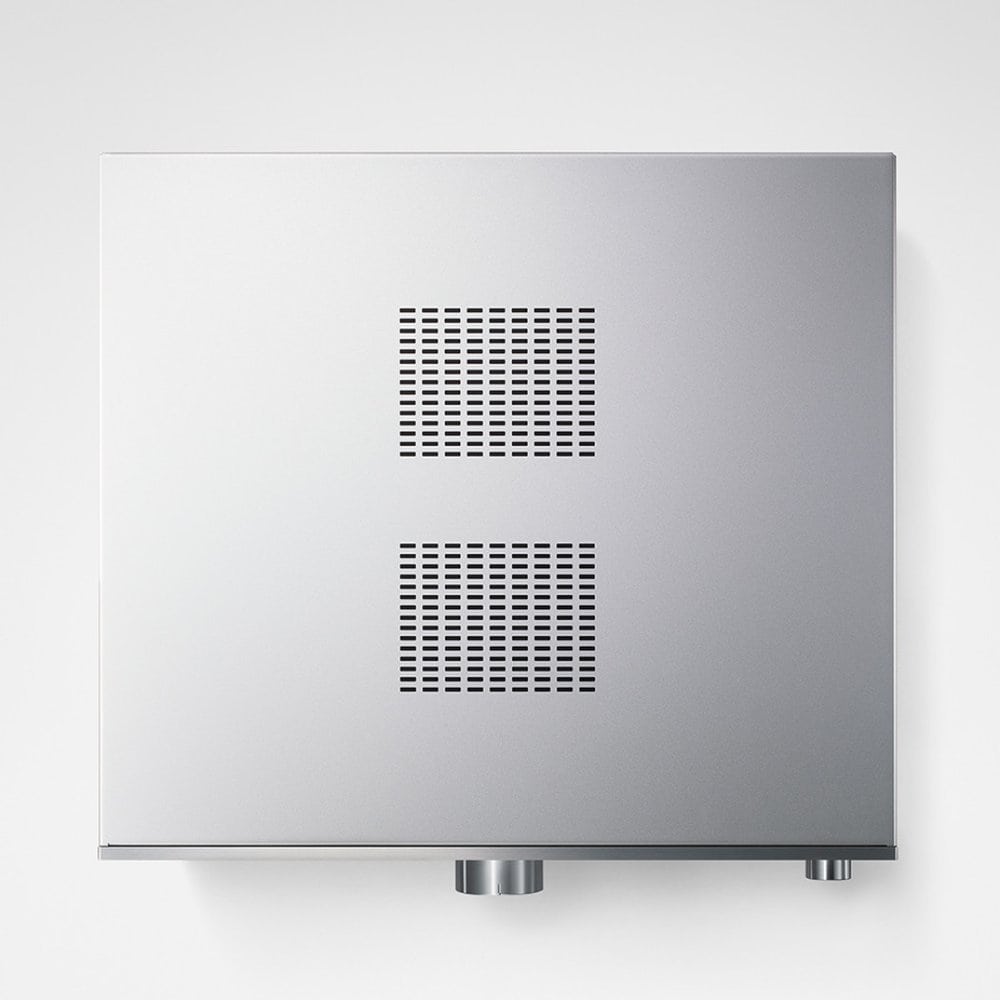 While the Technics lacks a little of the sheer cut and thrust of my AVM power amp, its sophisticated and perfectly controlled sound will appeal to many. The Technics SU-G700M2 integrated amp is a stunning, innovative product that I’m surprised isn’t generating more reviews. In time, I think it will.
While the Technics lacks a little of the sheer cut and thrust of my AVM power amp, its sophisticated and perfectly controlled sound will appeal to many. The Technics SU-G700M2 integrated amp is a stunning, innovative product that I’m surprised isn’t generating more reviews. In time, I think it will.
+ Yes, it’s true. I first auditioned this amp in late 2021 before it even hit the shelves, but somehow (I blame the pandemic) my review never got published. So, late in 2023, Panasonic were kind enough to let me have a play with the unit for a second time! So yeah, it’s been around for a couple of years but, as I write in my review, I don’t think it has received the attention that it deserves.





